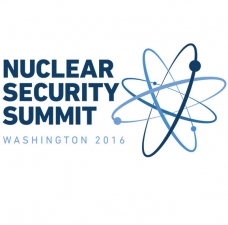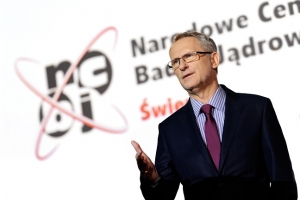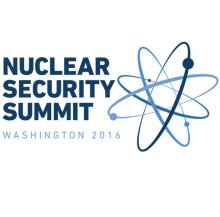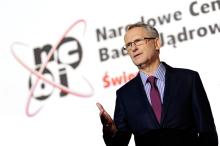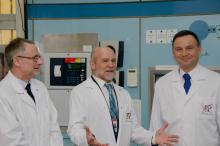Nuclear Security Summit held in Washington DC on March 31/April 1 was the largest convention of world leaders since the time UN had been called into being. 50 leaders of various nations met to discuss nuclear security issues and threats brought about by terrorists. Professor Krzysztof Kurek, NCBJ Director General, was among members of the Polish delegation headed by Andrzej Duda, President of Poland.
Nuclear Security Summit participants discussed methods to prevent threats to global security, including nuclear terrorism referred to in 2009 by Barack Obama, President of the USA, as the single largest global security threat. Almost all of the then set objectives have been already attained, including: to limit as much as possible peaceful applications of highly enriched uranium (HEU) and plutonium (that might be used to construct nuclear weapons), to strengthen security in nuclear power plants (by implementing international regulations and the best practices approach), to tighten international cooperation (within the framework of such organisations as International Atomic Energy Agency), to counteract illegal trafficking of radioactive materials, to develop nuclear technologies for peaceful applications.
„Successful conversion of 24 research nuclear reactors operated in 15 countries of the world from the HEU to LEU fuel is among the attained objectives. The MARIA Polish reactor case is an outstanding example” – said Professor Kurek. – „The conversion operation was extremely complicated. However, we have managed to retain crucial operational parameters of the reactor (e.g. 30 MW power level). Moreover, the increased to 4,800 hours annually rector up time has resulted in a significantly larger capacity to conduct research and/or to produce radioisotopes.”
Such a conversion is a rather complicated undertaking due to significant differences in physical parameters of both fuel types. Change of uranium enrichment level and modification (to some degree) of construction of fuel elements brought about change of some physical parameters of the reactor core (such as effective lifetime of neutrons, effective share of delayed neutrons, temperature coefficients of reactivity), which are essential from the reactor stability point of view. Therefore the conversion operation had to be preceded by some careful analyses and simulations. All computations were double-checked by both NCBJ and Argonne National Laboratory experts who used the same software codes. New LEU fuel elements were produced in France. All works were finished in 2014. To-day MARIA is running exclusively on LEU fuel.
MARIA reactor is an intense source of neutrons, particles of extraordinarily valuable properties for physicists (flux on the order of 1014 neutrons/s*cm²). Electrically neutral neutrons easily interact with matter (not being repelled by Coulomb barriers around nuclei) by all four known force fields (strong, electromagnetic, weak, and gravitational); therefore they may be used as excellent probes of matter. Such R&D works with potential applications in medicine, economy, industry, archaeology and/or art history are conducted in Świerk on six horizontal channels through which beams of neutrons are exited from the reactor core. Some new research bays are planned, including the “Neutrons H2” bay to be used in studies employing epithermal neutrons. Polish scientists are going to join research on Boron Neutron Capture Therapy, an innovative method to cure e.g. brain tumours. An intense international cooperation helped to acquire 200 million Euro worth research equipment (spectrometers, diffractometers) from the recently decommissioned BER-II reactor in Berlin. Some agreements have already been signed and the first delivery of the equipment is expected within a few coming months. MARIA is also used as an instructional aid by instructors who train future nuclear physicists and/or radiation protection professionals. In their efforts to popularize nuclear-related topics across the society, staff of NCBJ Training and Education Division is hosting in Świerk more than 7,000 visitors each year (mostly excursions of high school students), who are very anxious to sightsee also the sole in Poland nuclear reactor.
It is estimated that MARIA can be safely operated for another 40 years.
Nuclear Security Summits, a US government initiative, are organized bi-annually since 2010 as meetings of political leaders from the entire world. More info: www. nss2016.org
